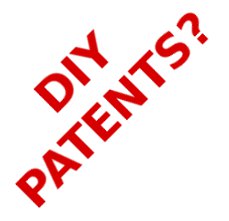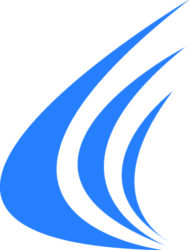You may wonder whether you should write and file your own patent application (e.g. a DIY (do-it-yourself) patent application) or whether you should have a patent attorney file directly a patent application that you wrote. This posted explains why we generally don’t just file the documents you give us as a provisional patent application without review. However, client written materials are usually a good place for us to start.
Since there are few requirements that must be met for the USPTO to accept a document as a provisional patent application, there are a large variety of disclosures in provisional patent applications. Since the USPTO will not examine a provisional patent application, they will not scrutinize the level of detail provided in any document that is filed as a provisional application. Given this, there is a wide range in the level of detail among provisional applications that are filed. This can range from a back-of-the napkin sketch of an invention filed as a provisional to a full application that you would see filed as a non-provisional application.
As a general rule we only file provisional applications that look like a non-provisional application, except that the provisional might have fewer claims. We generally will not take client-drafted documents and file them directly without review and revision to meet our non-provisional application standard for the reasons explained below. We think this approach best serves our client’s patent needs.
Priority Date
First, the reason for filing a patent application is to seek a resulting patent or at least to hold open the opportunity to obtain a patent on an invention. Patents are only granted on inventions that are new. Therefore, one function of the filing of an application is to establish a priority date (filing date) of the application. The priority date generally establishes your rights in the invention as of the priority date (with some exceptions). Therefore someone inventing or filing a patent application after your priority date should have inferior rights to you. In sum, the priority date (the filing date) of your provisional application gives you rights in your invention superior to later inventors of the same invention.
However, in order for your invention (or subfeatures or functions thereof) to be granted the priority date of your provisional application the invention must be enabled and adequately described. If a court later finds that the disclosure of your provisional application was inadequate, you could loose the benefit of the provisional application filing date. If priority is lost with respect to all or a subset of the features of your invention, it would be as if the provisional application was never filed on those features. In other words, to gain a benefit from the provisional application, the provisional application must be drafted properly and completely.
In order to obtain a patent, a non-provisional application claiming priority to the provisional must be filed within one year of the filing date of the provisional application. If information must be added to the subsequently filed non-provisional application because the provisional application did not contain sufficient detail, a question will arise as to whether that new information will receive the benefit of the provisional filing date.
Example
Why does this matter? Lets look at a hypothetical scenario. Assume that you file your provisional application on A+B on January 1, 2012. Then you consult with an attorney and the attorney notes that you left out some important details in the description of your idea. Lets call those left-out ideas “C.” So the attorney prepares a non-provisional application having A+B+C and claims priority to the provisional application. The non-provisional is filed on December 12, 2012. If +C would not be known to one skilled in the art by reading your provisional application, then A+B will get the benefit of the January 1, 2012 but A+B+C will not.
Assume that on October 1, 2012, another inventor “John” files an application on A+B+C (John did not learn of the invention from you, but independently invented). Therefore, it is possible that inventor john will have rights to the invention A+B+C over you because he was the first to disclose the A+B+C combination in the patent application (certain exceptions to this might apply). This may be true even if you intend your provisional application to cover A+B+C, but did not provide sufficient detail. What is the likelihood that “John” the inventor would file an intervening application? It is impossible to know. However, if you are proceeding forward with business plans on your invention in reliance on the provisional application, you want to be sure that you can actually rely on it.
Important Details
The wording in a patent application, provisional or non-provisional, is extremely important. Often times in patent disputes after a patent is granted, attorneys are wishing that just one additional word had been added to the corresponding patent application at the time of drafting that would make the case or thankful that that word is not there, depending on which client (the patent owner or the accused infringer) the attorney represents.
Too much and Not Enough
While it is not impossible for a client to draft a provisional patent application that meets the description and enablement requirements–and we have on occasion seen a well drafted application prepared by a client–most times we find that after reading a client-drafted application we would not feel comfortable opining that the client-drafted application would meet the requirements. Often the client-drafted application says both too much and not enough at the same time.
The client filed application might say too much by making unnecessary admissions that could limit the scope of protection afforded over the invention in a resulting patent. It might say too little by not describing the invention, its various parts, and its operation in sufficient detail. Further, it might say to little by not describing the invention broadly enough and thereby leaving on the table subject matter that could have been claimed.
Will a one page write up and a drawing or two be sufficient, if filed as a non-provisional, to secure your rights? It depends on the circumstances, but usually more detail is needed. There are online service providers that will assist you in filing your documents as a provisional application, however, we think this do-it-yourself process may provide clients a false sense of security, or at least creates a such a risk when client documents are not reviewed to sure they meet the legal description and enablement requirements.
A Good Starting Point
This is not to say that the client should not draft a detailed description of the invention and provide drawings. Such client-written materials are usually a great place for us to start drafting a patent application. Often times a detailed description of the invention provided by the client can speed up the patent application drafting process on our end and can reduce the overall costs of preparing a patent application. Therefore we encourage clients to provide us with detailed information about the invention. However, for the reasons explained above we will generally not file that information directly as a provisional application, but instead we will use it as a starting point to draft an application that broadly protects the client’s invention and meets our standards.
